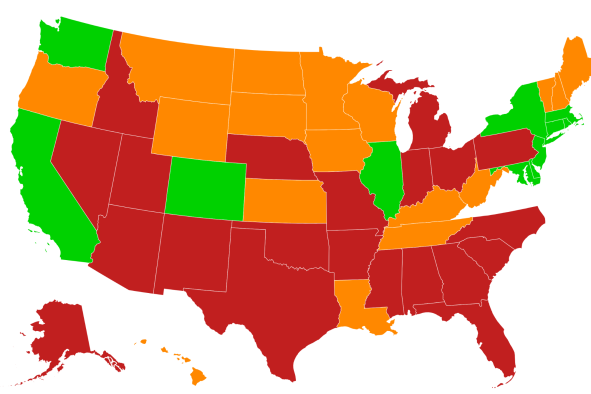Gas leaks cost U.S. fire departments over $500 million every year, new research has found. However, some cities are more affected by these incidents than others.
It is estimated that nearly 75 million U.S. households rely on natural gas to power boilers, furnaces, stoves, ovens and other appliances. The fuel is provided by a network of roughly 2.1 million miles of underground pipelines. However, over time, these pipes can develop leaks, and appliances can degrade, all of which allow the gaseous fuel to escape.
While some of these leaks are barely detectable, others result in immediate explosions.
"Uncombusted gas leaks are a preventable situation that can draw significant time and resources away from other emergencies," Sebastian Rowland, a scientist at Physicians, Scientists, and Engineers for Healthy Energy who was involved in the research, said in a statement. "Nationwide, fire departments are spending nearly half a billion dollars to prevent gas leaks from becoming even more serious emergencies."
In a new study published in the journal Energy Policy and led by PSE Health Energy, researchers combed through 15 years of emergency response data to determine the burden of these gas leaks on fire departments across the United States.
The data was collected between 2003 and 2018 and sourced from the Federal Emergency Management Agency's National Fire Incident Reporting System, or the NFIRS. During this period, 2.4 million gas leak-coded incidents that did not involve fire but required emergency response were recorded nationwide.
These incidents were not evenly distributed, and 20 cities in particular accounted for 19 percent of all uncombusted gas leak incidents across the U.S., with Northeastern and mid-Atlantic states experiencing higher rates of gas leaks than other parts of the country.
Looking at the year 2018 alone, the top 20 cities were as follows:
- New York, New York: 22,090 gas-leak coded incidents that did not involve fire.
- Chicago, Illinois: 5,032
- Yonkers, New York: 1,453
- Rochester, New York: 1,102
- Baltimore, Maryland: 1,076
- Washington, D.C.: 944
- Los Angeles, California: 922
- Houston, Texas: 829
- Austin, Texas: 727
- Charlotte, North Carolina: 703
- El Paso, Texas: 675
- Philadelphia, Pennsylvania: 664
- Dallas, Texas: 638
- Kansas City, Missouri: 635
- Columbus, Ohio: 602
- Boston, Massachusetts: 570
- Oklahoma City, Oklahoma: 506
- Newark, New Jersey: 486
- Minneapolis, Minnesota: 482
- Atlanta, Georgia: 473
Each single incident was estimated to cost $2,600 on average, with New York City emergency services spending more than $70,000,000 on gas-related incidents in 2018 alone.
During the 15-year study period, gas leaks also became more frequent, with a near quadrupling in gas leak reports.
The researchers added that, nationally, only 70 percent of fire departments actually report their data to the NFIRS, meaning these figures are likely to underestimate the total cost burden of gas leaks to fire departments around the country.
"These leaks represent a growing and largely hidden cost to society that should be considered when designing future energy systems," PSE Health Energy Senior Scientist Drew Michanowicz said in a statement.
"For most cities, there are potentially significant cost and resource savings that could be realized by transitioning away from widespread gas use and the hazard it poses."
Is there a health problem that's worrying you? Let us know via health@newsweek.com. We can ask experts for advice, and your story could be featured in Newsweek.
Disclaimer: The copyright of this article belongs to the original author. Reposting this article is solely for the purpose of information dissemination and does not constitute any investment advice. If there is any infringement, please contact us immediately. We will make corrections or deletions as necessary. Thank you.




